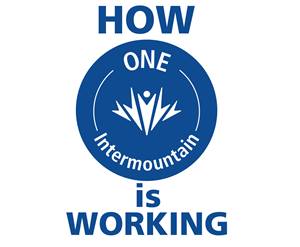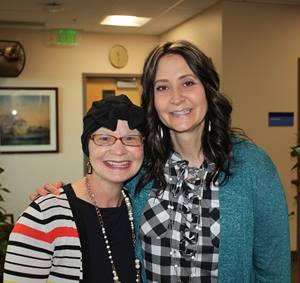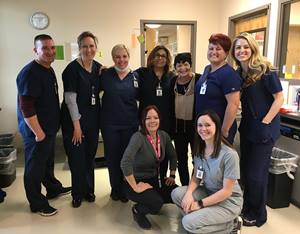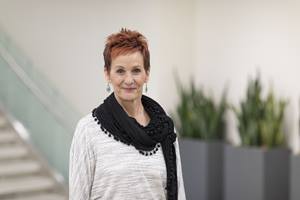
Angie Fisher first learned she had breast cancer when she was in her office at McKay-Dee Hospital, where she works as a medical staff coordinator for Masood Safaee, MD, senior medical director for Intermountain's trauma hospitals. Angie cried for a while with some coworkers, then pulled herself together. She wanted to know the next steps as soon as possible.

Angie received help and guidance from Diana Brewer, RN, a nurse navigator at McKay-Dee, who helped her understand her diagnosis and what to expect in her treatment. Diana is one of 18 nurse navigators at Intermountain’s six cancer centers. The navigators help empower patients and their families by teaching them about their disease, giving them support, and going over every step of their care treatment plan.
Intermountain has had a nurse navigator program for more than a decade, but with One Intermountain, their work has become more standardized and patient-centered. Deb Christensen, RN, a nurse navigator at Dixie Regional, helped lead the effort toward standardization and researched what other health systems are doing.
“As we standardized the nurse navigator role, we’ve been able to make improvements to help breast cancer patients like Angie have the same support from nurse navigators at every Intermountain cancer center,” says Deb. “For example, across all our hospitals we proactively reach out to patients, they’re provided face-to-face education, and we now use a navigation manual as part of our workflow.”

Angie Fisher and Diana Brewer, RN
Deb and her colleagues took a systematic approach to create a model program and ensure patient care would be delivered consistently. She researched best practices for the nurse navigator role and later worked with a colleague from Sutter Health, a not-for-profit healthcare system in California, who was involved in the same type of work. They published their findings in the Clinical Journal of Oncology Nursing.
What were some of the common themes in standardizing their role? “As we first looked across both Intermountain and Sutter Health, we saw there were some inconsistencies,” says Deb. “For example, there was no standardization among our hospitals in the nurse navigator’s roles or in the education they provided. This led to creating a standardized job description and branded education, which has made our work more patient-centered.”
Deb says another tricky part of standardizing their work was that different facilities have different levels of resources. Deb was able to identify functions that could be standardized, which included a navigation orientation process, clarity in role definition, and a standardized way for nurse navigators to track and document patients in iCentra. Identifying these needs made it easier to implement a plan, adopt standard training for all nurse navigators, and build support for the role.

Angie with some of the infusion caregivers at McKay-Dee
“The nurse navigation process is a beautiful thing,” says Angie, who’s since finished her chemotherapy. “Everything was explained to me in a way I could understand and see myself completing.”
Angie says her experience of working with the doctors, infusion nurses, medical assistants, imaging, and social work team was very positive and left her feeling totally supported during an extremely difficult time.
“Every cancer patient is different and has different reactions to the treatments,” she says. “When I felt most vulnerable, my nurse navigator, Diana, was there for me, helping me understand what to do next and letting me know I was in good hands. I think that’s what makes the nurse navigator program so successful for patients. I remember her saying, ‘We’ll take care of you every step of the way.’ And that was my experience with every Intermountain caregiver I encountered.”

Deb Christensen, RN,
“Helping patients like Angie is a pleasure,” says Diana. “We help empower patients and they’re so grateful.”

